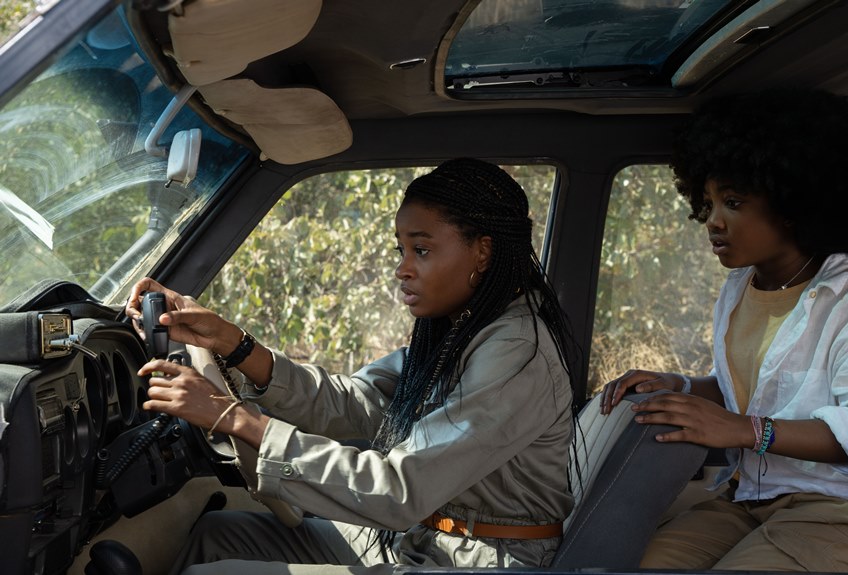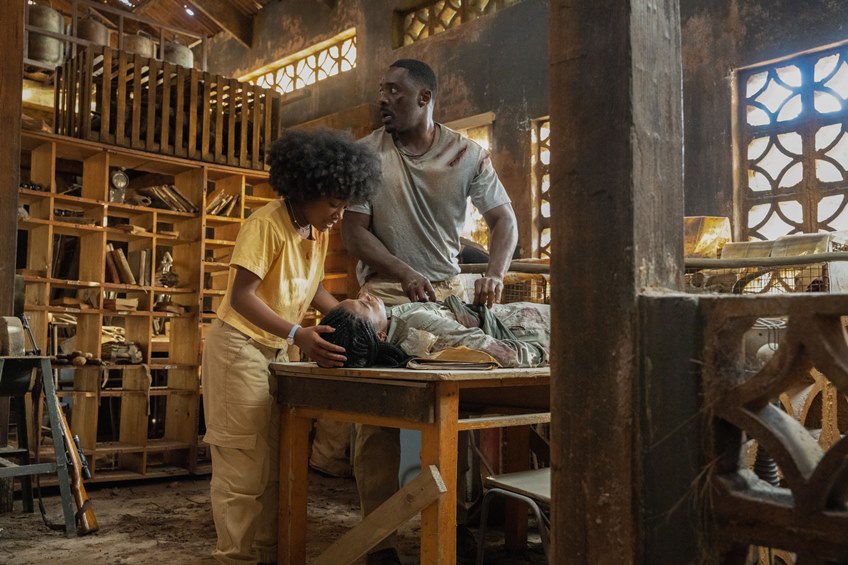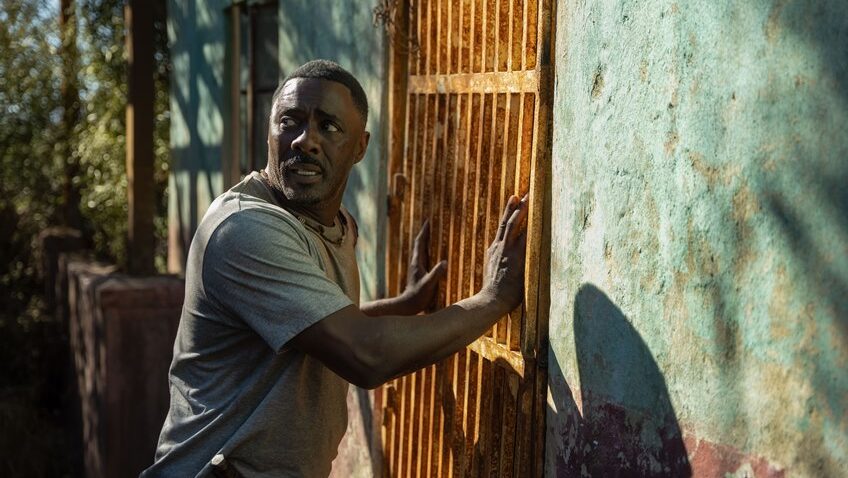Joyce Glasser reviews Beast (August 26, 2022) Cert 15, 93 mins.
In Beast, recently widowed African American doctor, Nate Samuels (Idris Elba), takes his two teenage daughters, Meredith (Lyana Halley) and Norah (Leah Sava Jeffries) to a South African game reserve only to find that a revengeful, indestructible lion is on the loose. When their biologist-ranger friend Martin Battles (Sharlto Copley) is attacked and the poachers return, the family bond in a crash course in survival skills.
If the story is far-fetched, the message, “don’t kill lions or they will come after you,” is disturbing, as there is no evidence that lions hold grudges and plenty that they never win against big guns.
Tall, handsome, distinguished, and versatile, Idris Elba came to our attention in the iconic American series The Wire. He became the eponymous criminal detective DCI John Luther who pays a heavy price for his dedication to his job in Luther; as did Elba’s Nelson Mandela in Long Walk to Freedom and his Norse Deity Hemdallr, the guard of Asgard in many Marvel Comic movies. To ensure the film’s message was heard, Elba played the ruthless villain in the acclaimed Beast of No Nation, and was, until recently, the front runner for the first Black James Bond. So, what’s an actor like that doing wrestling with a CGI lion in Beast?
If we don’t have the answer to that one, you could ask the same question of Icelandic writer-director-producer Baltasar Kormákur and the answer is easier. Kormákur impressed with his early Icelandic films: the offbeat Romantic Comedy, 101 Reykjavík and the terrific Jar City, one of the most atmospheric, world-weary detective movies of the decade. But after these successes, Kormákur went West to and started making male-centric violent action movies like Contraband and Two Guns, big duds, despite their star power.

In the best part of the film, the violent prologue, a jeep full of poachers let loose with machine guns on a Pride of lions. This is not even “sport” – although trophy hunters around the globe continue to pretend it is – but point-blank murder. The poachers do not manage to kill the dominant male, who is wounded but does not slink off to die. He returns for revenge and all humans, regardless of colour, are fair game.
The travel weary American family arrive at Martin’s comfortable, if cluttered home in the Mopani game reserve, Martin tells them they don’t have to remove their shoes. ‘Since my girlfriend left, I’ve been living like a bachelor,’ he says as if only women dislike dirty floors and carpets.
With that expository remark, has Martin just signed his death warrant in a film that seems to stand up for Prides and families over single men, including poachers?
No spoilers here, but the film benefits from the presence of Sharlto Copley, even if you are still cherishing his phenomenal performance in Neill Blomkamp’s debut Sci-Fi feature District 9 back in 2012.
But families are messy units. We realise that there is an issue between the girls, and their father who Meredith blames for not being around when their mother was dying of cancer and not showing an interest in her, or their mother’s photography.
The family’s issues are soon pushed aside when Martin takes them sightseeing and they come across an entire village of dead bodies – among them friends of Martin and perhaps relatives of Samuel’s deceased wife. They have been butchered by an animal as there are no signs of knives or bullets. Oddly, this attack was not for food as none of the villagers or their domestic animals have been eaten.
Eventually the lion attacks Martin who is separated from the family, and Nate makes the decision to save him, at first administering first aid over the unreliable phone. It is Meredith, however, who shows the greatest courage, or recklessness, by helping Martin back to the relative shelter of the dysfunctional jeep when the lion is distracted. Martin, we learn paid more attention to her photography in ten minutes than her dad ever did.

For the remainder of the 93-minute film, the writers and Kormákur have to produce a variety of plot devices to keep the game of wits between man and lion going. These include a car crash and self-sacrificial explosion that stretches credibility when it does not kill the beast. When the poachers show up again, events transpire so that there is a working truck in which the Samuels can escape – after Nate finds the keys.
The search for the keys contributes about ten minutes to the film and here you’d swear this city doctor had grown up in the bush with his prowess in handling snakes and wading through crocodile infested ponds. Taking refuge in an old schoolhouse to patch up Meredith who has been wounded (never go to South Africa without a doctor in your group), no one thinks to close the front door. The viewer might hear their own mother’s voice yelling, “close the door, we don’t live in a barn,” but this minimal defense measure never occurs to the Samuels.
The clue as to why Elba and Kormákur find themselves wrestling with an obvious CGI lion might come from screenplay writer Ryan Engle (based on a story by Jaime Primak Sullivan). Engle wrote the screenplay for the 2018 Dwayne “The Rock” Johnson disaster movie, Rampage. Based on a video game, wild animals the world over get bigger and bigger and converge on Chicago on the command of a deranged CEO of a gene-manipulation company.
Applying this video game and comic book premise to a film about a vulnerable species in a game reserve where, as in real life, hardworking, underpaid rangers are fighting devious poachers, does not work. The real message: “don’t kill lions because they are an endangered species and necessary for the balance of nature on which we all depend” somehow got lost in the Mopani reserve.




